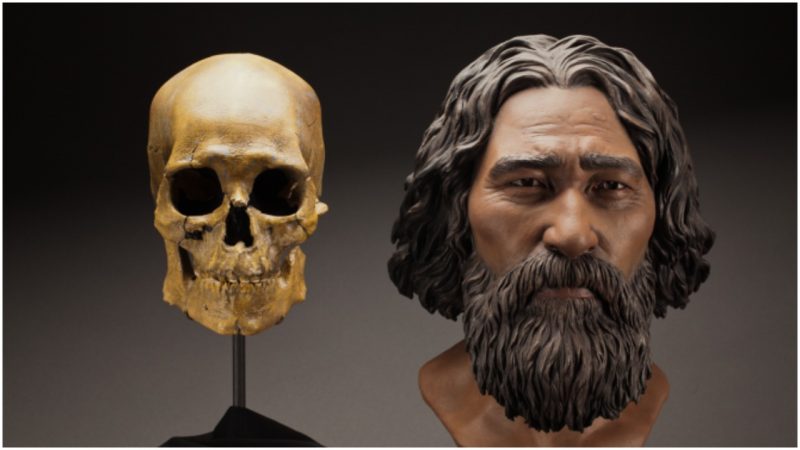The saga of the Kennewick Man, a prehistoric man who researchers eventually determined had the closest DNA match to Native American tribes, began when his remains surfaced on the banks of the Columbia River, in Kennewick, Washington, in now-distant 1996. Almost an entire skeleton, incredibly well-preserved for its age, was plucked from the mud of the river. It took years to get some accurate answers.
Officials who first analyzed the skeletal remains reportedly located a wound on the pelvis bone and theorized that this could have been a European, perhaps an early settler, whose life was taken by a Native American. Representatives of several tribes claimed the remains were of one of their own. There was more to the story, and it gained momentum in the newspapers, the courtrooms, and, fortunately. in the research labs.
The remains were carbon-dated to about 8,500 years of age, a time when it’s unlikely any European could have left a footprint on this side of the Atlantic. The Kennewick Man, as the remains became known to the public, remained a subject of intense fascination–and tension.
The shape of the skull supported assumptions that the prehistoric man was a match with the modern-day Polynesians or the indigenous Ainu people of Japan. Photos of the Japanese Ainu people at one point served as inspiration for reconstructing the face of the 8,500-year-old.
Later revisiting of the DNA material of the ancient man, however, did not match with claims based on the skull analysis, thus two leads had been dismissed. The case was finally settled in 2015 when a new, more careful study of the genetic makeup of the Kennewick Man revealed the DNA match was much closer to home. At that point, scientists used DNA samples from the man’s hand.

CC BY-SA 4.0
More details have been highlighted from this latter research: for instance, the man was middle-aged and he would have lost his life at the latest at 45, the earliest at 35. His diet was largely composed of fish and he would have had a well-developed body and muscles, hinting at a lifetime spent in hard labor.
The research findings were made public in the journal Nature, and among the two major authors who penned the study were a U.S. anthropologist from the Southern Methodist University in Dallas, David Meltzer, and an evolutionary biologist from the University of Copenhagen in Denmark, Eske Willerslev. They led an entire team of researchers in this second attempt at the DNA material of the Kennewick Man. A conclusion was reached–the Kennewick Man was neither Polynesian, Japanese, nor European; he was “most closely related to contemporary Native Americans,” Live Science reported.
It was further established that the Kennewick Man was closer with tribes who have historically inhabited the Pacific Northwest. These tribes have included the Colville people, themselves a nomadic tribe who have historically occupied different territories around the Columbia River.
As the 2015 study authors had noted at the time, not all Native American tribes had submitted DNA specimens for the research; therefore other tribes might have had close connections to the Kennewick Man.
Before any of these conclusions were reached, before serious research was able to progress, several Native American tribes went on to argue that the Kennewick Man was their ancestor. They believed the scientific study on the remains should be put a halt, the bones to be returned for burial on Native lands, as legally granted with the Native American Graves Protection and Repatriation Act (NAGPRA). It was eventually ruled out that the origins of the ancient man were not clear enough, and this allowed scientists to proceed with analysis and research
Native Americans, however, had had all the valid reasons to react this way. As the Smithsonian notes, the early history of how Native American graves have been treated, how corpses have been dug up and even decapitated, bodily parts transferred to research labs and museums, has been a reality which Natives have faced in the past. Anthropologists of the 19th century had not been very sensitive to how such acts might play out with the feelings of the indigenous people, hence the NAGPRA has been introduced, enforcement which has come to protect Native American burial sites from similar unwanted events in the future.
But in the case of the Kennewick man, the story was that the ancient bone relics were not directly tied to any living tribe, and the NAGPRA, in this case, was not applicable.
The ancient Kennewick man was eventually buried in early 2017, after being handed to Native American tribe representatives. “A wrong had finally been righted,” reportedly said the tribe representatives, following the burial procession at an undisclosed location not very far from Columbia River. The burial officially closed the entire twenty-year-long saga.
To date, the Kennewick Man remains among the oldest known skeletons found on North American soil and is considered to have been among the most contested set of human remains on the continent.
